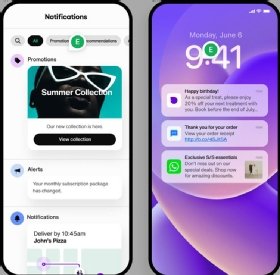
Getty Images/iStockphoto
Sendbird launches in-app business messaging, dashboard
SMS and email channels are so noisy and subject to so many regulations that in-app messaging has appeal for businesses who want a direct customer communication channel.
The business messaging technology landscape includes choices from giants such as Google, Apple and Meta; CRM and customer service vendors such as Zoho, Twilio and Zendesk; and numerous startups who consider themselves "best-of-breed." Even Telegram has business messaging.
Another launched today from Sendbird, an 11-year-old company whose in-app messaging is used by many midsized businesses. It also counts large enterprises in the healthcare vertical, such as Walgreens, Noom and WeightWatchers, among its 4,000 customers as well as others in industries such as banking and financial services and Match Group's dating apps.
Sendbird's platform has a back-end control center where marketing and service leaders can automate customer communications workflows for either one-to-one or one-to-many messaging. Other features include templates for omnichannel campaigns and push notification management based on customer preferences or triggered by customer behaviors.
AI intermingles with business messaging tech
Business messaging can include many different kinds of communications, such as appointment reminders, delivery notifications, marketing offers, scheduling issues -- think flight delays for airline passengers -- among others. But what they all have in common is a back-end system that can control who gets what, on which channel, most of which comprise social media direct messaging, email, SMS text, or the company's own app.
The in-app platform is where Sendbird focuses its business messaging, and when needed can branch out to other platforms such as SMS and regionally popular messaging apps including WhatsApp and WeChat. Sendbird's "channel sequencing" feature starts with the app and activates other channels -- which often incur costs -- picking the most effective, lowest-cost channels instead of flooding them all.

Controlled by a single API, Sendbird can also pipe its data into customer data platforms.
Sendbird released an AI-powered chatbot last month to go with its messaging platform that can ingest a company's customer service, sales and marketing data. The company is large language model-agnostic and is more interested in providing customers with the capability of using LLMs as opposed to building its own, said cofounder and CEO John S. Kim.
"We're not bringing the brains to you -- we have partnered with all the brains," Kim said. "We're providing all the other tools for you to fully operationalize AI in production."
Apps become hot channel
Companies might consider basing their customer communications on in-app business messaging using tools such as Sendbird, Airship and Pendo because privacy regulations around the world are getting tighter -- especially for email and SMS channels.
SMS rules vary from country to country and control factors such as the hours companies are allowed to text, how long texts can be, and how frequently they can be sent. Some countries restrict companies from texting about specific topics such as gambling, firearms, adult content, debt relief and credit repair. Texting is typically required to be two-way and must give the recipient opportunity to opt out.
In-app messaging solves a number of business issues, including opt-in compliance. It generates rich first-party data the users don't share with intermediaries such as Meta or Google. It also adds value to a company's app, which is sometimes hard to find for businesses, said Michael Fauscette, founder of Arion Research, a global tech consulting and research firm.
In-app messaging can solve a digital-culture problem that vexes many companies: Consumers block texts and emails as they tire of unsolicited messages from aggressive marketers. When they don't, they may just lose track of their favorite businesses in the din of marketing noise.
"You've got this kind of friction that started to develop with the customers," Fauscette said.
His firm surveyed 1,200 consumers on behalf of Sendbird to find out about the channels they preferred businesses to contact them.
"I thought that baby boomers would be the ones that were getting tired of text," Fauscette said. "The truth is, it's the millennials and Gen Z that are starting to get fatigued with texts. They were more open to it and then they just got swamped."
Don Fluckinger is a senior news writer for TechTarget Editorial. He covers customer experience, digital experience management and end-user computing. Got a tip? Email him.








